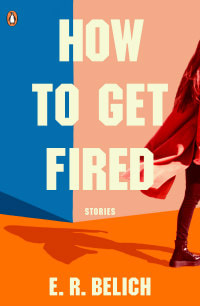 A debut collection full of biting satire. Evana Belich is a New Zealand author who has won several awards for her short stories. She's held various jobs, as a trade union official and employment relations officer, roles which have clearly informed her fiction. How to Get Fired, Belich's first published collection, comprises 16 stories, many linked by reappearing characters. The main focus of Evana Belich's fiction is on workplace relations – crappy jobs, ambitious bosses, dubious productivity gains, vacuous motivational mantras etc. etc. She also writes about strained friendships and difficult families. The tone is acerbically comic and ruthlessly observational. No one escapes this author's steely gaze. Belich writes about modern life as it really is – crowded with so much cognitive junk. There are sales targets for useless products to be met, the emotional labour involved in keeping bosses happy, and explosive Christmases where years of repressed stress come to the fore. If you have enjoyed quirky workplace fiction such as Woman in the Purple Skirt by Natsuko Imamura, There's No Such Thing as an Easy Job, by Kikuko Tsumura and Diary of a Void by Emi Yagi, then you will love How to Get Fired. How to Get Fired, by Elana Belich. Published by Penguin. $32.99 Review by Chris Saliba 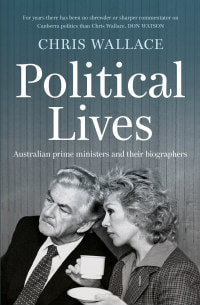 A dual history of Australia's prime ministers, and the men and women who wrote about them. Political journalist and biographer Chris Wallace started writing a biography of Julia Gillard when she was deputy prime minister in the Rudd Labor government. By the time the book was ready to roll, Gillard was PM and the victim of vicious media and opposition treatment. Wallace's bio was balanced, showing the light and dark of Gillard's character. Considering the toxic atmosphere, Wallace feared her book could be used against Gillard. She pulled it from publication and returned her advance. This experience led Wallace to consider the effect of biography on Australia's prime ministers. Political Lives provides accounts of the biographical treatment of Australia's 20th century prime ministers, from Edmund Barton to John Howard. Australia's first six prime ministers had no biographies written about them while they held office. Things took a radical turn in the 1970s with the election of Labor's Gough Whitlam, who was the subject of several contemporaneous biographies and arguably hit its peak with Blanche d'Alpuget's Robert J. Hawke. (Wallace's chapter on the writing of the Hawke biography is a tour de force and shouldn't be missed.) A brisk short history of Australia's prime ministers, and the men and women who wrote about them. Political Lives: Australian Prime Ministers and Their Biographers, by Chris Wallace. Published by UNSW. $39.99 Review by Chris Saliba 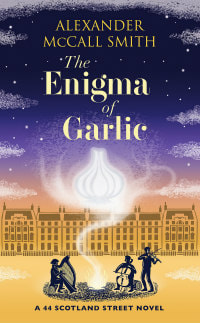 A cast of troubled souls throng the pages of Alexander McCall Smith's The Enigma of Garlic, the latest in the 44 Scotland Street series. Big Lou and Fat Bob are about to be married, but the bride has much on her mind. Her coffee bar business keeps her busier than she'd like and rumours are that Fat Bob is seeing another woman. Could it be true? Bruce Anderson has been struck by lighting, apparently resulting in a personality change – for the better. Gone is his vanity and replacing it a sense of purpose. He flirts with joining a monastery. And finally, Stuart Pollock is trying to assert himself when his pushy, estranged wife, Irene, makes an unwelcome return. Stuart's mother tries to dispatch Irene, but events take an unexpected turn. Most of the novel's plot turns on the resolving of several moral quandaries. Comic relief is offered in the guise of Sister Maria-Fiore dei Fiori di Montagna, an intrepid nun who has received training from the Vatican's secret service. She successfully trails Fat Bob to find out what his secret is. A sympathetic, realistic portrait of everyday lives engaged in life's central struggles. The Enigma of Garlic, by Alexander McCall Smith. Published by Polygon. $34.99 Review by Chris Saliba 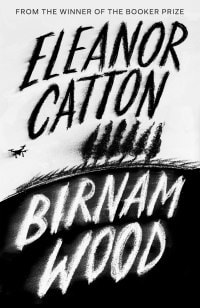 An eco-activist group bites off more than it can chew when it accepts funding from a billionaire. Birnam Wood is an eco-activist group, guerilla gardeners who descend on vacant plots of land and plant small food crops. The grass roots collective is run along non-hierarchical lines, yet real power in the group resides with its founder, the emotionally and philosophically complex Mira Bunting. Mira is your proverbial angry left wing activist, ready to make revolution and bring down the whole corrupt capitalist system. Despite Birnam Wood's egalitarian aims, with its eschewing of vertical power structures, the membership is revolting. Shelley, second in command in all but name, has a long list of private grievances against Mira. She secretly wants to leave. Ideologically pure Tony has returned from exile to confront the hypocrisy he sees in the group, making an uncomfortable scene. Enter Robert Lemoine, billionaire drone manufacturer and tech wizard. He's about to seal a purchase for a cattle station and surrounding land with owners Owen and Jill Darvish. Owen, now Sir Owen, has just received a knighthood for his contributions to the environment – a ridiculous honour, considering his past as a pest controller. Sir Owen has set up a business with Robert Lemoine's drone company, Autonomo, to monitor at-risk species, hence the knighthood. All of this makes Mira's very blood boil. She investigates the Darvish property, with ideas of doing some planting. It is here she runs into Lemoine. The canny Mira has soon met her match when she tries to conceal her intentions and Lemoine checkmates her. Nonetheless, a deal is soon hammered out. Funding for Birnam Wood, in exchange for the environmental gloss the partnership will give to Lemoine's drone business. But Robert Lemoine is not to be trusted, not even at this level. He's up to his eyeballs in some of the most evil business practices imaginable. Eleanor Catton won the Booker in 2013 for The Luminaries. Birnam Wood is her follow up. It's been worth the wait. Part eco-thriller, part satire on left wing politics, Birnam Wood is expertly plotted and has the suspense of a ticking time bomb. The cast of characters is superbly drawn, especially the self-satisfied middle class, middle aged couple, Sir Owen and Lady Jill Darvish. The dialogue is refreshingly real and tone perfect, capturing speech heard regularly in everyday life. Catton has a sharp eye and is an astute observer of life, of our vanities and frailties, which she conveys with peerless skill on the page. A classic page-turning thriller, with a rogue's gallery of do-gooders, baddies and the plain indifferent, whose indifference allows the worst to happen. The shock ending will leave the reader reeling for days. Don't miss it! Birnam Wood, by Eleanor Catton. Published by Granta. $32.99 Review by Chris Saliba 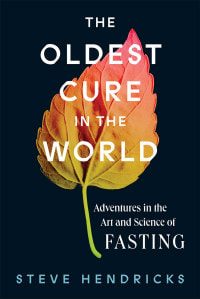 A fascinating two thousand year history of fasting. For thousands of years, fasting was more religious practice than scientific endeavour. From antiquity to Christianity, people starved themselves in the hope of appeasing their gods. Some philosophers and divines took a more moderate approach, and saw fasting as generally good for mind, body and spirit. But overall fasting, especially under Christianity, was an extreme practice that served little good. Come the 19th century and fasting started to take on a more scientific aspect. It was proven that the body could endure fasting for much longer than was thought safe or prudent, and that it could in some strange way cure certain ills. There were some famous proselytisers, such as writer Upton Sinclair and bodybuilder and publisher of Physical Culture magazine, Bernarr Macfadden. But for all these steps forward, there were many steps back. Fasting is deeply counter-intuitive. Starving yourself to promote a healthy body defies common sense. The most logical way to cure illness is to seek out a doctor and take prescription drugs or undergo surgery. The medical fraternity was deeply hostile to fasting. It threatened a powerful interest group. Arriving in the 21st century, fasting has made a few leaps forward. There is a bit more science around what fasting does for the body, which is basic repair work, flushing out toxins and swapping out bad cells for good ones. When the body doesn't have to metabolise food, it can turn its attention to self-maintenance. While it won't cure all diseases, regular fasting might act as a good preventative. Studies show impressive benefits across a range of diseases. It could even be useful for combating mental illness, as several cases in the book demonstrate. The great tragedy of fasting's long history is its neglect by science. If much more rigorous scientific inquiry in fasting had taken place over the past century, we might have cures for a range of diseases, avoiding hospital stays and lifelong drug dependency. Steve Hendricks has written an engaging, lively, wide ranging history that should have broad appeal. The Oldest Cure in the World, by Steve Hendricks. Published by Abrams Press. $45 Review by Chris Saliba |
AuthorNorth Melbourne Books Categories
All
Archives
March 2024
|
 RSS Feed
RSS Feed
